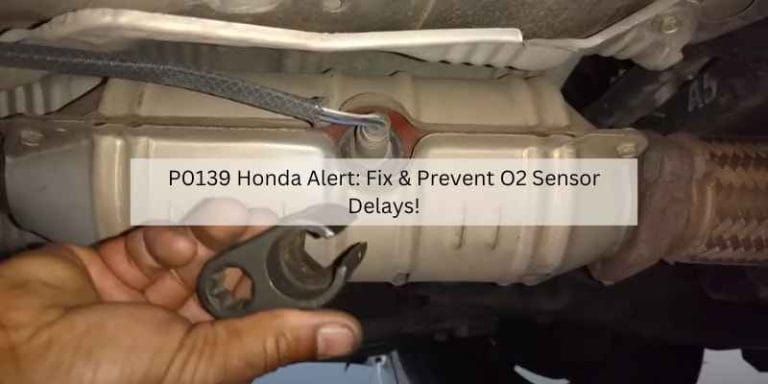How to Check Coolant Level Honda Civic: Step-by-Step Guide
To check the coolant level in a Honda Civic, park the car on a level surface, let the engine cool down, and locate the coolant reservoir. The coolant level should be between the minimum and maximum marks on the reservoir.
Maintaining the proper coolant level is crucial for the efficient functioning of your Honda Civic. In this guide, you will find easy step-by-step instructions on how to perform this essential check on your vehicle. Whether you are a new car owner learning the basics of car maintenance or a seasoned driver looking for a quick refresher, this article will provide you with all the information you need to ensure that your Honda Civic’s coolant level is always at the optimal range.
Let’s dive in to understand the process of checking the coolant level in your Honda Civic, keeping your car running smoothly and preventing any potential overheating issues.
Importance Of Regular Coolant Level Check
Regular coolant level checks are crucial for maintaining the optimal functioning of your Honda Civic. Coolant, also known as antifreeze, plays a vital role in preventing engine overheating and ensuring the vehicle’s smooth performance. By regularly monitoring your coolant levels, you can prevent potential engine damage and costly repairs.
Preventing Engine Overheating
One of the most critical aspects of regularly checking your coolant level is preventing engine overheating. Adequate coolant levels ensure that your engine remains within the optimal operating temperature range, preventing any potential damage from excessive heat. By maintaining optimal cooling conditions, you can prevent issues such as engine knock and cylinder warping, reducing the risk of significant mechanical failures.
Ensuring Optimal Engine Performance
Maintaining the correct coolant level is also essential for ensuring optimal engine performance. The coolant not only regulates the engine temperature but also acts as a lubricant for the water pump and helps prevent corrosion within the cooling system. By regularly checking and maintaining the coolant level, you can ensure that your Honda Civic functions at its best.
Understanding Honda Civic Coolant System
To check the coolant level in your Honda Civic, start with a cool engine and remove the radiator cap. The coolant should be visible near the top of the radiator, and if it’s low, you can add a 50/50 mixture of coolant and water to the reservoir.
Make sure to check the coolant level regularly to prevent overheating.
Coolant plays a crucial role in maintaining the optimal temperature of your Honda Civic’s engine. Proper maintenance of the coolant system is essential to prevent overheating and potential engine damage. Understanding the Honda Civic coolant system, including the types of coolant and the location of the coolant reservoir, is vital for ensuring the smooth operation of your vehicle.

Types Of Coolant
When it comes to the coolant for your Honda Civic, it’s important to use the manufacturer-recommended coolant. The Honda Civic typically uses ethylene glycol-based coolant, which provides protection against freezing and boiling. Additionally, it contains additives that help prevent corrosion and lubricate the water pump. Using the right coolant will ensure the longevity of your vehicle’s cooling system.
Location Of Coolant Reservoir
The coolant reservoir in the Honda Civic is typically located near the radiator. To locate the reservoir, start by opening the hood and visually inspecting the engine compartment. The reservoir is a semi-transparent plastic container with “coolant” or “antifreeze” labeled on the cap. Refer to your vehicle’s manual for the exact location, as it may vary depending on the model year.
Regularly checking the coolant level in the reservoir is essential to maintain the proper functioning of the cooling system and prevent potential overheating issues. Ensure the engine is cool before checking the coolant level to avoid burns or injury.
Step-by-step Guide To Check Coolant Level
When it comes to maintaining your Honda Civic, checking the coolant level is an essential part of ensuring the engine runs smoothly. In this step-by-step guide, you will learn how to check the coolant level in your Honda Civic to keep it running at its best.
Park The Car On A Flat Surface
Before starting, park your Honda Civic on a flat surface. This ensures that the coolant in the reservoir is evenly distributed, allowing for an accurate reading of the coolant level.
Allow Engine To Cool Down
Next, allow the engine of your Honda Civic to cool down. It is crucial to perform this check when the engine is cold to prevent any risk of burns from hot components.
Locate Coolant Reservoir
Open the hood of your Honda Civic and locate the coolant reservoir. It is a translucent plastic container with “ENGINE COOLANT” labeled on the cap. The reservoir is typically located near the front of the engine compartment.
Check Coolant Level
Once you have located the reservoir, check the coolant level. The level should be between the “MIN” and “MAX” marks on the side of the reservoir. If the level is below the “MIN” mark, you need to add more coolant.
Adding Coolant If Necessary
If the coolant level is below the “MIN” mark, you can add more coolant to bring it up to the “MAX” mark. Use a 50/50 mixture of coolant and water for the best performance. Be sure to tighten the cap securely after adding the coolant.
Signs Of Low Coolant Level In Honda Civic
When it comes to maintaining your Honda Civic, keeping an eye on the coolant level is crucial. A low coolant level can lead to overheating and potential engine damage. Learning how to recognize the signs of low coolant level in your Honda Civic can help you prevent serious issues and keep your car running smoothly. In this guide, we’ll walk you through the key indicators that your Honda Civic’s coolant level may be low and how to check it.
Dashboard Warning Lights
If your Honda Civic has a dashboard warning light specifically for low coolant, it will illuminate when the coolant level is below the recommended level. Check your owner’s manual to understand the specific symbol for low coolant and what to do if it appears. Dash warning lights are often the first indicator of a potential problem, so it’s important to heed them and take action promptly.
Engine Temperature Gauge Reading
Another indicator of low coolant level in your Honda Civic is the engine temperature gauge reading. If you notice the engine temperature gauge creeping into the high range, it could be a sign of low coolant. Overheating can lead to serious damage, so it’s crucial to shut off the engine and allow it to cool down before checking the coolant level.
Maintenance Tips For Honda Civic Coolant System
Regular Check-ups
Regularly inspecting the coolant level in your Honda Civic is essential to ensure proper engine function. Follow these simple steps to perform a coolant level check:
- Park the car on a level surface and allow the engine to cool down completely.
- Lift the hood and locate the coolant reservoir tank.
- Check the coolant level by visually inspecting the markings on the reservoir tank.
- Top off the coolant if necessary. Use a mixture of equal parts coolant and distilled water for the best results.
Coolant Flush And Replacement Schedule
Regular coolant flushes and replacements are crucial to maintaining the health of your Honda Civic’s cooling system. Follow these guidelines when scheduling coolant flush and replacement:
| Mileage | Service Interval |
|---|---|
| 30,000 miles | Check cooling system for any signs of wear or leaks |
| 60,000 miles | Flush and replace the coolant to prevent corrosion and buildup |
| 90,000 miles | Repeat the coolant flush and replacement process |
| 120,000 miles | Inspect coolant hoses and belts for signs of deterioration |
Frequently Asked Questions For How To Check Coolant Level Honda Civic
What Is The Importance Of Checking The Coolant Level In A Honda Civic?
Regularly checking the coolant level ensures proper engine temperature and prevents overheating, which can cause serious damage to the engine.
How Often Should The Coolant Level Be Checked In A Honda Civic?
It is recommended to check the coolant level in your Honda Civic every few months or as per the manufacturer’s guidelines to maintain optimal engine performance.
What Are The Steps To Check The Coolant Level In A Honda Civic?
To check the coolant level in your Honda Civic, ensure the engine is cool, locate the coolant reservoir, and visually inspect the level against the markings.
What Should I Do If The Coolant Level In My Honda Civic Is Low?
If the coolant level is low in your Honda Civic, add the appropriate coolant mixture to the reservoir to reach the recommended level. Check for any leaks if the level drops frequently.
Conclusion
Checking your Honda Civic’s coolant level is crucial for maintaining the health of your engine. By following the simple steps outlined in this guide, you can ensure that your car continues to run smoothly and efficiently. Regular maintenance of your coolant level will help to prevent costly repairs and extend the life of your vehicle.
Keep your Honda Civic performing at its best by staying on top of your coolant levels.







